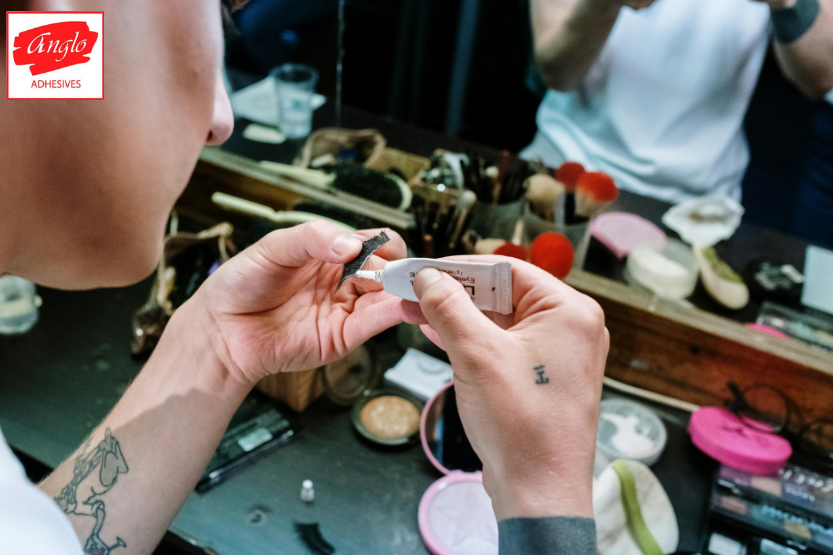Blog
How is PVA Adhesive Used in Different Industries?

Polyvinyl Acetate, more commonly referred to as PVA adhesive, is a versatile and widely-used adhesive in various industries and DIY projects. Known for its strong bonding properties and ease of use, PVA glue can be found in most toolboxes, from woodworking workshops to school classrooms. This article delves into the many uses, properties, and types of PVA adhesive to help you understand its importance and functionality.
What is PVA Adhesive Made Of?
PVA adhesive is a synthetic polymer created from vinyl acetate monomer through a process known as polymerisation. This results in a water-based, non-toxic glue that is flexible when dry. Its composition makes it ideal for bonding porous materials, such as wood, paper, and fabrics. PVA is also commonly used in sealants and coatings due to its moisture-resistant qualities once cured.
Types of PVA Adhesive
There are different types of PVA adhesives tailored to specific applications:
- Wood Glue: This is the most common type, used for woodworking. It creates a strong bond between wood surfaces and is often water-resistant.
- Craft Glue: A thinner version of PVA, ideal for paper, cards, and other lightweight materials. It’s perfect for arts and crafts projects.
- Waterproof PVA: Specifically designed for outdoor applications, this variant ensures that the bond remains intact even in damp or wet conditions.
Each type serves a distinct purpose, ensuring the right product is available for each task.
Uses of PVA Adhesive
PVA adhesive is known for its versatility and is used across numerous sectors:
- Woodworking: PVA is a staple in joinery and carpentry. Its strong bonding properties make it ideal for furniture assembly and general woodwork repairs.
- Crafting: In schools, PVA is a go-to adhesive for paper, cardboard, and fabric crafts.
- Bookbinding: PVA is frequently used in the binding of books due to its flexibility and durability.
- Wallpapering: PVA is often mixed with water to seal walls before wallpaper is applied, providing a better surface for adhesion.
Whether you’re working on a home improvement project or a creative craft, PVA is likely the adhesive you’ll reach for.
How to Use PVA Adhesive Effectively
When using PVA, following the right techniques is essential to ensuring a strong and lasting bond. Here are some key tips:
- Surface Preparation: Always ensure surfaces are clean, dry, and free of dust or grease. A poorly prepared surface will lead to a weak bond.
- Application: Apply an even coat on one or both surfaces, depending on the materials. For porous materials like wood, applying to both surfaces often yields a stronger result.
- Clamping: For woodwork, using clamps to hold pieces together while the PVA adhesive cures will give the strongest bond.
- Drying Time: PVA typically takes between 12 and 24 hours to fully cure, depending on the type of glue and the environment. Ensure the glued items remain undisturbed during this time.
Following these guidelines will help you get the most out of your PVA adhesive and achieve long-lasting results.
Is PVA Adhesive Waterproof?
Standard PVA adhesive is not waterproof. While it can resist some moisture, prolonged exposure to water can weaken the bond. However, there are waterproof versions of PVA available, specifically designed for outdoor use. Waterproof PVA is commonly used in the construction of outdoor furniture, fences, and even in some marine applications. If your project involves exposure to water or humidity, opting for a waterproof PVA adhesive is essential to maintain the integrity of the bond.
Environmental Impact
One of the most significant advantages of PVA adhesive is its low environmental impact. It is water-based, non-toxic, and generally safe to use in various settings, including schools and homes. PVA does not release harmful fumes during application or curing, making it an eco-friendly choice compared to other chemical-based adhesives. Additionally, its production has a lower carbon footprint, and some variants are even biodegradable, further reducing environmental impact.
Comparing PVA to other Adhesives
While PVA adhesive is incredibly versatile, it’s worth comparing it to other adhesives to understand its strengths and limitations:
- Super Glue (Cyanoacrylate): Super glue is fast-setting and creates an extremely strong bond, but it’s not ideal for porous surfaces like wood or paper. In contrast, PVA works excellently with these materials and provides a more flexible bond.
- Epoxy Resin: Epoxy adhesives offer stronger, more permanent bonds, especially for metals and plastics. However, they are more expensive and harder to work with than PVA, making PVA the preferred choice for most everyday tasks.
- Contact Cement: This adhesive is best suited for non-porous surfaces such as laminate or metal. PVA, on the other hand, excels with porous materials like wood, paper, and fabric.
Why Choose Anglo Adhesives?
At Anglo Adhesives, we pride ourselves on providing high-quality, reliable adhesives for a range of applications. Whether you’re a professional carpenter or a DIY enthusiast, our selection of PVA adhesives is designed to meet all your bonding needs. We offer a variety of adhesives, from general-purpose craft glue to specialised waterproof options.
Our commitment to quality ensures that our PVA adhesives provide strong, durable bonds every time, helping you complete your projects with confidence. Plus, our knowledgeable team is always on hand to offer advice and guidance, ensuring you choose the right adhesive for your specific needs. When it comes to PVA adhesive, Anglo Adhesives is your trusted partner for superior bonding solutions.
For more information, visit our website or contact us today. Whether you’re looking for standard or waterproof PVA, we have the right product for you.